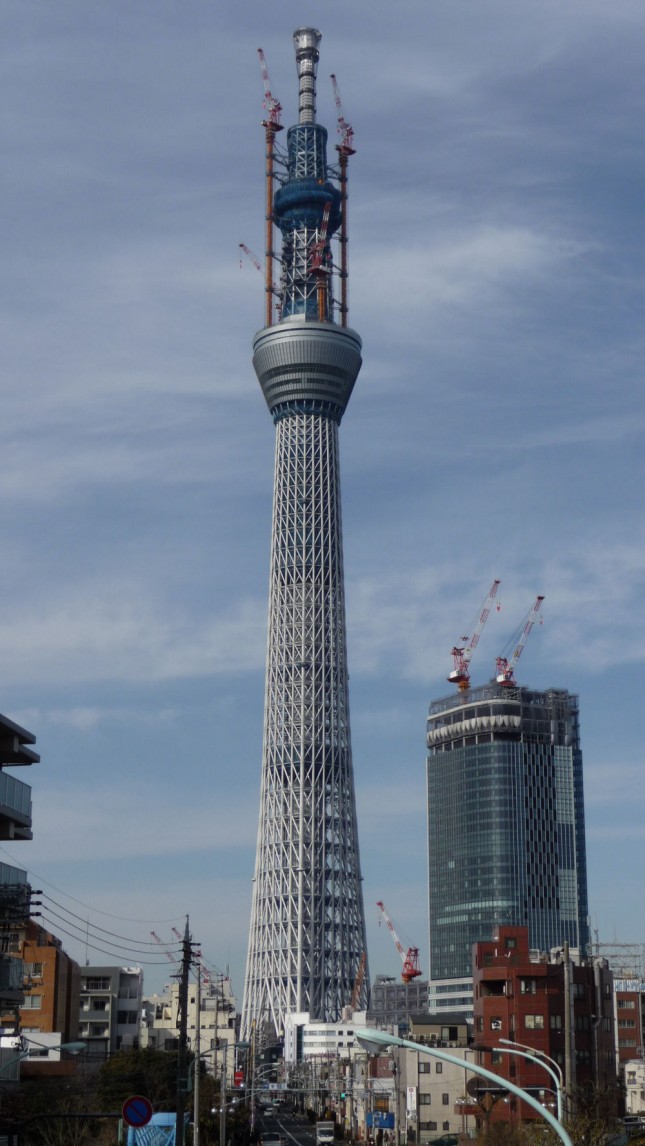Source: www.worldarchitecturenews.com
Tokyo Sky Tree passes the 600m mark on its way to becoming the second tallest freestanding structure in the world
 Nikken Sekkei’s chainmail-style broadcasting, restaurant and observation tower in Sumida, Tokyo is hot on the heels of the Canton Tower (610m) on its journey to becoming the second tallest freestanding structure in the world. Now measuring an incredible 601m in height, the Tokyo Sky Tree (formerly known as the New Tokyo Tower) may soar above its neighbours in Japan but resides firmly in the shadow of SOM’s highly regarded Burj Khalifa (828m).
Nikken Sekkei’s chainmail-style broadcasting, restaurant and observation tower in Sumida, Tokyo is hot on the heels of the Canton Tower (610m) on its journey to becoming the second tallest freestanding structure in the world. Now measuring an incredible 601m in height, the Tokyo Sky Tree (formerly known as the New Tokyo Tower) may soar above its neighbours in Japan but resides firmly in the shadow of SOM’s highly regarded Burj Khalifa (828m).
Construction commenced in July 2008 and the completed structure currently due to open in spring 2012. In October 2009, the projected height of the Tokyo Sky Tower was increased from 610m to 634m in order to make it the highest self-supporting steel tower in the world. The slender silhouette was inspired by historical Japanese architecture formed of Sori (concave curves) and Mukuri (convex curves), with a triangular base gradually transforming into a cylindrical spire.
Light plays an important part in the concept for the project, overseen by President of Sirius Lighting Office, Hirohito Totsune. Before construction had begun, shafts of light where projected into the site to illustrate the planned height of the tower as seen in the visuals to the left. On completion, two differing styles of light display will illuminate the steel structure on alternating days, as developer TOBU RAILWAY CO explains: “The operations are called Iki, the manly spirit held be the urbane commoners of Edo, and Miyabi, one of the traditional Japanese aesthetic ideals meaning elegance.
“The lighting is designed to enhance the beauty of the tower by integrating together the parts that are illuminated and the parts that are not. Beauty and energy conservation coexist in the design as a result of the advanced lighting technology.”
Although the building may incorporate various elements of state-of-the-art technology as a broadcasting facility, the concept design is firmly based in traditional ideals. The colour of the Tokyo Sky Tree is a base of white with the slightest hint of indigo dye, an original hue base on the traditional Japanese shade aijiro. It is thought this colour will give the building a ‘subtle lustre’ as the seasons change whilst ‘reflecting the sentiment of the old town’.












